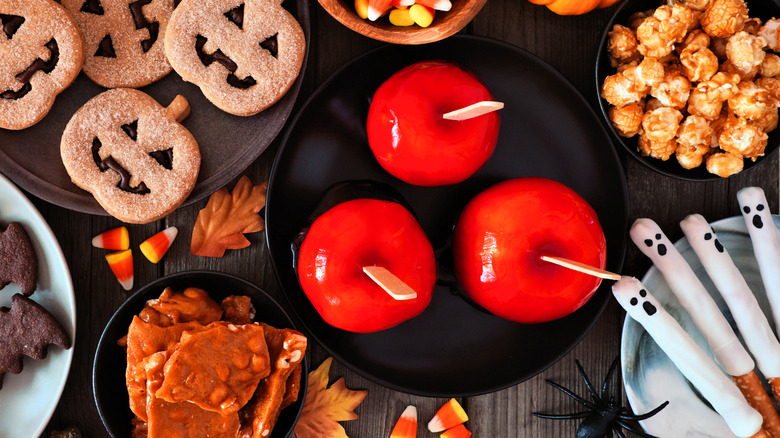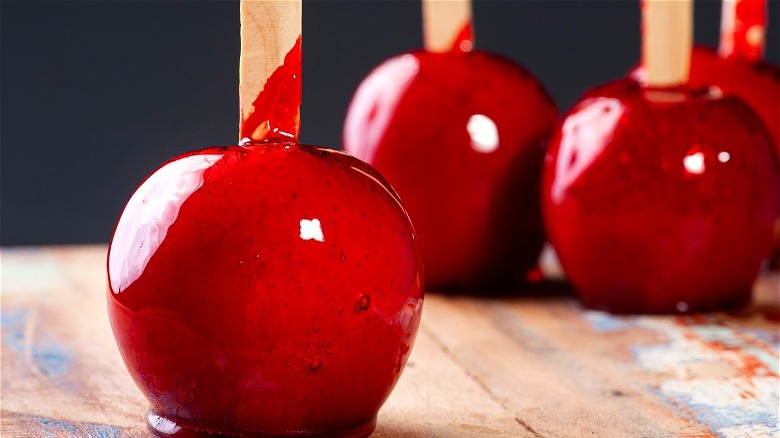How Candy Apples Became A Halloween Fan-Favorite
While candy corn may have earned the title of the most hated Halloween candy in America, a treat not many people can turn down is the beloved apple, especially during the golden days of autumn. According to The Food Network, there are more than 7,000 varieties of apples grown around the world, and the best time to grab a bushel or two is between the months of July and November. Statista claimed the average U.S. consumer ate roughly 16 pounds of apples in 2021 — no wonder the USDA ranked them as the number one fruit in America a couple of years prior.
As Halloween approaches, trick-or-treating will be the top choice on most children's bucket lists for the haunted holiday (and they probably don't want to receive an apple when they're hoping for the coveted full-sized candy bar). However, apples undoubtedly have their place: With so many at their peak right now, plenty of families will also indulge in apple bobbing or adorning sticks with apples covered in caramel, candy coating, or chocolate. While the shiny red candy apple has been an emblem of Halloween for years, the iconic indulgence's long and rich evolution dates back centuries. Before making your own hard candy apples, you may be interested to know how the classic seasonal treat came to be.
Apples: a symbol of life turned seasonal treat
According to NPR, the apple has long been a symbol of fertility and life. Samhain, the Gaelic festival which celebrates the end of autumn and the beginning of winter, highlights the specific connection between apples and Halloween time: merrymakers hoped these fertile fruits held a promise that though the harvest was over, life would return in a few months.
While fresh apples and Halloween share a clear folk connection, the classic candy version we now know and love made its debut around Halloween by complete chance. According to the International Independent Showman's Museum, in 1908 William Kolb was testing a bright red cinnamon candy coating for the Christmas season and decided to dip some apples in the liquid candy for a window display (or he accidentally dropped them into the sugary glaze, depending on the story). Passersby were so mesmerized by their shiny glow that Kolb ended up selling them all for five cents apiece, and he went on to make thousands more.
While there was a time when children often received candy apples for Halloween, Smithsonian Magazine describes how that all but ceased in the 1980s when columnists reported kids potentially receiving apples tainted with poison and razor blades. Though this fear persists today, making your own candy or caramel apples is still an American tradition. Even if you do prefer a bucketful of candy, everyone has room to enjoy an apple or two on October 31st.

